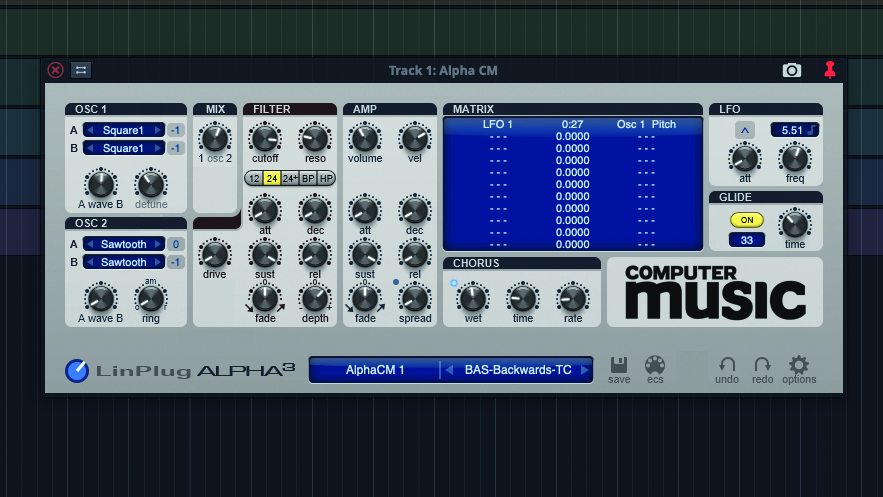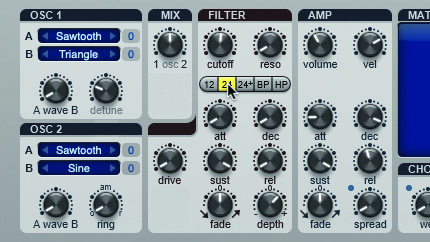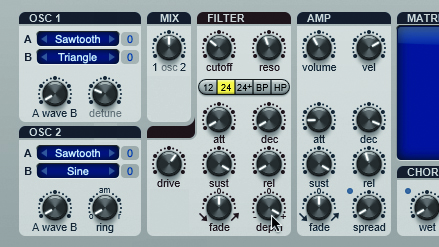The 40 greatest synth sounds of all time, No 9: Kraftwerk - The Model
Pop perfection from the electronic music pioneers
We’ve no doubt that there are few MusicRadar users who are unfamiliar with the name Kraftwerk.
Moreover, it’d be a fairly safe assumption that most of you already have an idea of what they sounded like.
Yet it may come as something of a surprise to learn that the smartly-dressed synthpop pioneers only achieved their signature sound after years of evolution.
Indeed, when mainmen Ralf Hütter and Florian Schneider formed the band in 1970, there was nary a synthesiser in sight!
As a matter of fact, Kraftwerk’s first two (eponymous) LPs were rooted firmly in the experimental ‘Krautrock’ style that was popular at the time of their formation. Synths would come into play on the third album, Ralf und Florian, on which both the Minimoog and EMS Synthi AKS would appear.
Still rooted in Germanic psychedelia, Ralf und Florian nevertheless saw the Düsseldorf duo’s first tentative steps into electronic ambience and minimalism.
Even the band’s breakthrough, 1974’s Autobahn, retained such conventional instrumentation as guitar, flute, and violin and, though now seen as a seminal electronic album, Autobahn also contains elements of ambience and kosmische musik.
Want all the hottest music and gear news, reviews, deals, features and more, direct to your inbox? Sign up here.
Still, the repetitious rhythms of the title track were a taste of things to come. By the time The Man-Machine was released in 1978, the transformation was complete - Kraftwerk were dedicated to creating their signature brand of electronic pop music.
This seminal synth-pop sound was best exemplified by The Model. Overlooked at the time of its release, The Model would belatedly find favour in 1981, when it was re-issued as the b-side to the band’s then-current single, Computer Love. Re-re-issued as an A-side, The Model topped the UK singles chart in 1982.
An exercise in minimalism, The Model is a near-perfect pop construct, with a simple progression, spare percussion, and a pretty much instantly memorable melody played in octaves throughout.

Step 1: It’s difficult to know what synths were actually used to create the various timbres heard on The Model, though it is widely suspected that either the Minimoog or Polymoog were used for some sounds. In truth, it doesn’t actually matter, as nearly any two-oscillator synth will do the job. We’re going to use LinPlug’s AlphaCM.

Step 2: Go over to the browser at the bottom and click AlphaCM 1 to bring up the preset banks. Load up the patch called Z_Init. Go to Osc 1 and select Sawtooth for wave slot A. Turn the Wave knob fully to the A position. Do the same with Osc 2. Next up, push Osc 1’s Detune up to just under 10 o’clock.

Step 3: Let’s go to the amp section and nudge the envelope’s Attack up to just below 9 o’clock. Release should be just under halfway. Sustain and Decay can be cranked to full. This provides our sound with a soft attack, and a bit of a fade-out when the key is released. Now, let’s move to the Filter section, where we’ll select 24 as the mode.

Step 4: It might be a good idea to push the Drive up a little bit for some faux analogue grit. Now for the main bit. We’ll set the Cutoff knob to 10 o’clock, and we’ll push the Reso(nance) knob up to 11 o’clock or so. This will help us get the characteristic ‘wow’ once we bring the filter’s envelope into play. On that, crank the Depth knob full.

Step 5: Next, let’s shape our filter envelope. We’ll start by nudging the Attack to just under 9 o’clock. The Decay should be set to just over the 9 o’clock position. We’ll reduce the Sustain to just under the 2 o’clock position. We’ll set our Release to just under the 1 o’clock position. That’s pretty close, though only playing the riff will tell.

Step 6: Here, we’ve tweaked the filter envelope’s Decay a bit to fit our playing style. Now, we can sweeten the sound with a bit of echo, courtesy of PSP’s cmDelay, on which we’ve selected the patch called Basic Middle Delay. We’ve activated Tempo Sync, and tweaked both Feedback and Mix levels. This is a good start – you can fine-tune it as you see fit.


Computer Music magazine is the world’s best selling publication dedicated solely to making great music with your Mac or PC computer. Each issue it brings its lucky readers the best in cutting-edge tutorials, need-to-know, expert software reviews and even all the tools you actually need to make great music today, courtesy of our legendary CM Plugin Suite.
